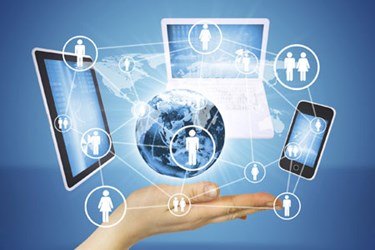6 Tech Trends To Watch For At HIMSS16

By Vinil Menon, Chief Technology Officer, CitiusTech
Healthcare professionals across the country are preparing to converge upon Las Vegas for the HIMSS Annual Conference & Exhibition, the biggest healthcare information technology gathering of the year. The conference agenda is chock full of more than 300 education sessions on topics of interest from population health to business intelligence to patient engagement to privacy and security, setting the stage to discuss major 2016 trends.
CitiusTech recently conducted its own analysis to identify and analyze 2016 industry technology trends, which are also well reflected in the HIMSS16 agenda. Some topics have been and will continue to be top-of-mind, such as how healthcare organizations respond to privacy and security concerns. Other topics, such as cloud computing, Big Data, advanced analytics, and mobility continue to evolve rapidly along with technology. Based upon industry research and conversations with senior executives at leading client organizations and senior technology professionals, six trends emerged that will be interesting to watch for at this year’s conference.
Trend #1: Increasing Cloud Efficiency
Fundamental to so much of what the healthcare industry works to accomplish is the infrastructure, standards, and technology integration that support it. One such technology, cloud computing, has been around for some time and most organizations have embraced it, or are in the process of developing applications on cloud infrastructure. An increased focus on driving efficiency from existing investments continues. It is no longer sufficient to scale vertically in minutes — the cost of the new hardware, maintainability, licensing, ongoing support — all need to be optimized. As the maturity of cloud platforms and infrastructure increases, moving toward utilizing Platform-as-a-Service (PaaS) components will deliver even greater savings. Stability, ongoing support, and privacy will remain key concerns to be addressed as this trend continues.
Trend #2: Growing Containerization
Another technology trend that made an impact in 2015 was Docker’s push to bring containerization to the forefront. Docker’s sweet spot lies in its ability to enable efficient migration to a PaaS model. Docker has quickly gained a tremendous fan following and its adoption is likely to increase significantly. We look forward to seeing how this trend is discussed at HIMSS this year.
Trend #3: Leveraging Real-Time Analytics With Big Data
The pace of innovation in the clinical and business intelligence areas continues to accelerate. On the aggregation front, real-time data feeds and streams will become the norm. At the consumer end, self-service analysis by clinical and business users will become the de facto approach. The need for near-real-time insights into enterprise and user-specific data sets as well as the ability to act upon them is a key driver. What’s more, the availability of scalable, low cost infrastructure via public cloud vendors makes it easier for enterprises to upload data and run analytics, all in the cloud, using off-the-shelf tools.
Trend #4: Embracing Predictive Analytics
Taking clinical and business intelligence to the next level, healthcare organizations realize the enormous potential predictive analytics has for identifying high-risk patients, reducing readmissions, and improving overall patient outcomes. Organizations are enhancing their IT infrastructure by aligning clinical, financial, and quality data from EHRs, health information systems, and practice management systems and integrating predictive analytics models. Data and tools need to be complemented by strong product management, including in-depth knowledge of internal IT infrastructure, organizational structure, staff and patient populations, analytics requirements, and organizational priorities.
Trend #5: Connecting With The Internet of Things (IoT)
2015 was the year of the wearable. HIMSS16 attendees can expect to hear a lot of buzz about the convergence of technology with patients and the combination of factors that help drive higher engagement. Leaders in this space, such as Apple, Fitbit, and Microsoft, have pushed the envelope of possibility. As healthcare organizations consider extending their reach to include data from end users and patients via sensor-enabled mobile phones, wearables, and nearables, the plethora of sensors that form the backbone of the IoT needs to be included as well. The key will be assimilating data from these input devices while addressing challenges around manageability of data, patient privacy, and data normalization.
Trend #6: Pushing Digital Transformation
In parallel with increasing connections and engagement is the impact of design, usability, and mobility. As the initial euphoria over mobile enablement along with oft-repeated catch phrases, such as responsive design, hybrid versus native, etc., dies down, it is now accepted that mobile is the new norm. This requires more than simply adding a new presentation layer on top of existing applications. Mobility today requires an integrated look at data, services, security, and how users will interact with applications. Features need to change to suit mobility while incorporating capabilities made popular by consumer apps, such as location awareness, micro-interactions, in-app purchases, innovative approaches to data presentation, and data sharing.
More To Watch
While not an exhaustive list, these six trends continue to drive the healthcare industry forward. HIMSS16 is the perfect forum to gather information about how best to apply these trends at your organization.
